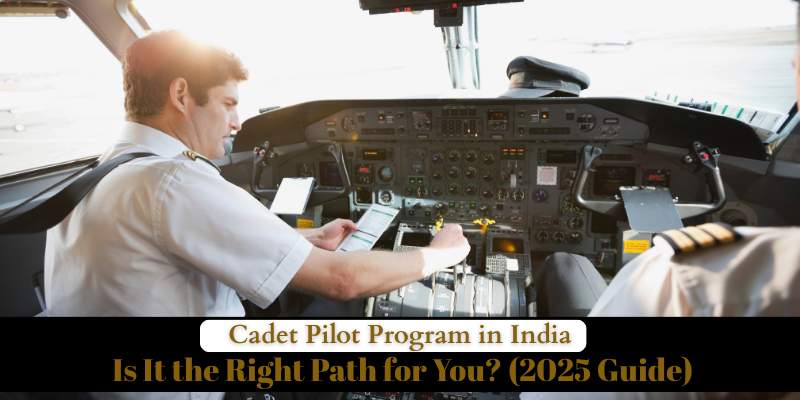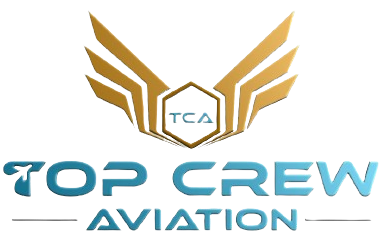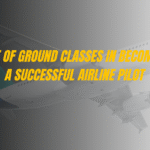
The aviation industry in India is booming, and many students dream of flying high as airline pilots. With an increasing number of airlines operating domestically and internationally, the demand for well-trained commercial pilots has surged. One popular and structured pathway to becoming a commercial pilot is the Cadet Pilot Program in India. But is it the right path for you? In this detailed blog, we will explore every aspect of the Cadet Pilot Program—what it is, how it works, its eligibility, cost, training structure, pros and cons, and how it compares to the traditional Commercial Pilot License (CPL) route.
What is a Cadet Pilot Program?
A Cadet Pilot Program is a comprehensive training initiative designed and sponsored by commercial airlines to train aspiring pilots from scratch. It is structured to take students from having no flying experience to becoming qualified First Officers ready to fly commercial aircraft. Airlines like IndiGo, Air Asia, and SpiceJet partner with globally recognized flying schools to ensure the cadets are trained to international aviation standards.
Key Highlights:
- Direct connection with airlines, providing a clear career path
- Guaranteed job interview or conditional job offer upon successful completion
- Structured training with world-class flight instructors and facilities
- High upfront investment, but strong return on career prospects
- Includes classroom theory, simulator training, and real-time flying experience
Cadet Pilot Program in India: Overview
India’s rapidly expanding civil aviation sector, with its ambitious airline expansion plans and fleet acquisitions, has given rise to a high demand for well-trained pilots. As a result, Cadet Pilot Programs in India have become increasingly popular among aviation aspirants. These programs are managed by airlines in partnership with flight schools both in India and abroad, ensuring high-quality pilot training in a structured, airline-oriented environment.
Popular Airline Cadet Pilot Programs in India:
- IndiGo Cadet Pilot Program (in partnership with CAE, Chimes Aviation, L3Harris, FTA, and others)
- SpiceJet Cadet Pilot Program (collaboration with international flight academies)
- Air Asia Cadet Pilot Program (affordable and flexible training modules)
Cadet Pilot Program After 12th
One of the key attractions of the Cadet Pilot Program is that students can apply immediately after completing their 12th standard. This makes it an ideal option for young aspirants who want to begin their aviation career without delay.
Basic Requirements:
- Completion of 10+2 education with Physics and Mathematics from a recognized board
- Minimum age requirement: 17 years (at the time of application)
- Ability to clear DGCA Class 1 Medical Examination
- Good command of English communication (spoken and written)
- Must be an Indian citizen or hold a valid residential status
By entering a cadet program right after school, students benefit from early exposure to aviation discipline and structured airline training from day one.
Cadet Pilot Program Eligibility
To be accepted into a cadet program, applicants must meet strict eligibility requirements that ensure they are physically and mentally fit for a professional pilot career.
Academic:
- 10+2 with Physics and Mathematics (CBSE, ISC, or equivalent board)
- Minimum 60% aggregate marks (some airlines may have stricter cutoffs)
Medical:
- A DGCA Class 1 Medical Certificate is mandatory
- Good visual acuity (corrective lenses allowed within specified limits)
- Normal hearing and overall physical fitness
Other Requirements:
- Minimum age: 17 years
- Fluent in English (written and verbal communication)
- Ability to pass psychometric and aptitude assessments
- Indian citizenship or a valid long-term Indian residency
Cadet Pilot Program Fees in India
The Cadet Pilot Program fees in India are considered a significant investment, reflecting the premium training, facilities, and airline integration involved.
| Program | Estimated Fees (INR) |
| IndiGo Cadet Program | ₹75-85 lakhs |
| SpiceJet Cadet Program | ₹70-80 lakhs |
| Air Asia Cadet Program | ₹60-75 lakhs |
What’s Included in the Fees:
- Ground school theoretical training (DGCA subjects)
- Flying training (200+ hours of flight time)
- Simulator sessions and assessments
- Type Rating on Airbus A320 (or airline-specific aircraft)
- Accommodation and visa (for international modules)
- Airline orientation program
Some institutes also offer financing assistance or tie-ups with banks for educational loans.
Top Cadet Pilot Training Institutes
Here are some of the best training institutes affiliated with Top Cadet Pilot Programs in India:
- CAE Global Academy – Offers the IndiGo cadet program training in India and abroad
- Capt. Sahil Khurana Aviation Academy – Indian-based ground school and aviation training provider
- L3Harris Airline Academy – UK-based world-class training partner for IndiGo
- FTA New Zealand, Skyborne (UK/USA), Epic Flight Academy (USA) – Partnered with Indian airlines for flying modules
Choosing a reputed and DGCA-approved training partner ensures you get high-standard training with better chances of placement.
Airline-Sponsored Cadet Pilot Programs
IndiGo Cadet Pilot Program
- Multiple training pathways in India and overseas
- World-class facilities with CAE, FTA, L3Harris
- Airbus A320 Type Rating included
- Placement guaranteed upon successful completion and merit
SpiceJet Cadet Pilot Program
- Program designed with international flying academies
- Simulator-heavy training modules
- Emphasis on SOP-based airline flying
- Career progression is supported within the airline structure
Air Asia Cadet Pilot Program
- Cost-effective compared to other programs
- Suitable for students looking for flexible payment plans
- Airline immersion training and extensive mentoring
Scope of Cadet Pilot Program in India
India is projected to become the third-largest aviation market in the world by 2030. With new airports, increasing fleet sizes, and growing domestic air travel, the scope of cadet pilot programs in India is significant.
Career Opportunities After Cadet Training:
- First Officer (Airline Co-Pilot) on Airbus or Boeing fleets
- Progression to Captain after gaining sufficient flying hours
- Instructor roles in flying schools after CPL
- International airline jobs after gaining ATPL
Cadet graduates have a significant edge in hiring due to airline-aligned training and SOP familiarity.
Difference Between Cadet Pilot Program and CPL
| Feature | Cadet Program | Traditional CPL |
| Job Guarantee | Yes | No |
| Airline Integration | Strong & Pre-Planned | Self-Navigated |
| Training Fees | ₹60-85 Lakhs | ₹45-55 Lakhs |
| Training Location | India + Abroad (based on program) | Mostly India |
| Training Quality | Premium, SOP-Based | Varies with FTO |
| Time Duration | 18–24 months (fixed) | 18–30 months (flexible) |
Pros and Cons of Cadet Pilot Program
Pros:
- Strong career pathway with airline assurance
- High-standard global training curriculum
- Structured, time-bound course
- Preferred hiring by airlines
- Better placement and faster promotion potential
Cons:
- High financial investment
- Competitive and challenging selection process
- No refunds upon failure or withdrawal
- Pressure of performance throughout training
Is the Cadet Pilot Program Worth It?
The value of a cadet pilot program depends on your long-term vision, financial situation, and commitment to an aviation career. If you’re looking for a structured entry into a reputable airline and can afford the investment, then yes—a Cadet Pilot Program is worth it. It shortens your job hunt and increases your chances of starting as a First Officer quickly.
However, if you prefer flexibility, lower cost, and an independent flying experience, a traditional CPL route might suit you better.
How to Join the Cadet Pilot Program in India
- Do Your Research: Identify and compare cadet programs offered by major airlines
- Check Eligibility: Ensure you meet academic, age, and medical standards
- Medical Fitness: Obtain DGCA Class 1 Medical Certificate
- Submit Application: Apply via the airline or partnered FTO’s official website
- Entrance Tests: Clear written exams, psychometric tests, and airline interviews
- Enroll & Train: Complete training modules across ground school, flying school, and type-rating
- Final Evaluation: Undergo final assessments to qualify for airline induction
Conclusion: Is the Cadet Pilot Program Right for You?
The Cadet Pilot Program in India offers a fast-track, structured path to becoming an airline pilot—especially for those who are focused, financially prepared, and ready to commit early. It provides hands-on training, job security, and exposure to airline operations from day one. However, it also comes with high costs and intense competition.
If you’re a student wondering how to become a pilot after 12th, or someone evaluating the difference between CPL and cadet training, take time to assess your financial situation, goals, and readiness.
Whether you’re eyeing the IndiGo Cadet Pilot Program, SpiceJet, or AirAsia, research thoroughly and choose the best cadet pilot program that aligns with your aspirations.
Ready to take off? Start your journey today by exploring top DGCA-approved cadet pilot programs in India and apply early to secure your seat in the cockpit.
When Should You Start ATPL Ground Classes in Your Pilot Journey
Suggestion URL :
- How to Become a Pilot After 10th in India
- How to Prepare for DGCA Exams
- How to Become an Airline Pilot in India
- How to Become a Pilot in India
- How to Clear DGCA Exams in First Attempt
- Commercial Pilot Training in Jaipur
- Pilot Training Institute in Delhi
AQs: Cadet Pilot Program in India
Q1. Can I join the Cadet Pilot Program after 12th?
Yes, most cadet programs allow you to apply right after completing 12th with Physics and Math.
Q2. What is the average duration of a cadet pilot program?
Generally, cadet programs take between 18 and 24 months to complete, including ground school, flight training, and simulator sessions.
Q3. Is the cadet pilot program better than CPL?
It depends. Cadet programs offer a direct pathway to airlines, but they come at a higher cost. CPL is cheaper but requires more effort in job hunting.
Q4. Are cadet programs only in India?
No. Many cadet programs involve international flying modules in countries like New Zealand, the UAE, South Africa, the USA, and other locations.
Q5. What is the success rate of cadet pilot programs?
On average, 80% or more cadets secure airline positions after completing all training phases successfully.
Frequently Asked Questions
No FAQs found.



